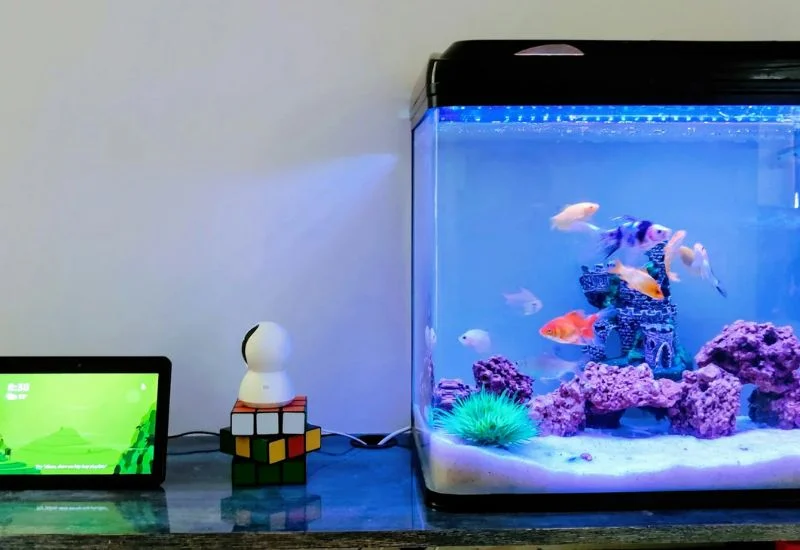Adding new fish to a tank with old fish can increase its aesthetic appeal, but introducing new fish can also lead to problems that aquarists may face.
Adding new fish into your existing tank can cause stress on new ones. Tank mates may become aggressive, and poor water quality can negatively affect the environment. The fish could be sick and have contagious diseases. All these reasons can cause serious health problems for fish.
Here is the guide on how to introduce new fish to old fish.
Preparation Before Introducing New Fish
Before adding the fish into the tank, make sure the tank is fully prepared. Here are the factors that you should consider:
Checking Fish Compatibility
Before adding new fish to your tank, make sure they are compatible. Fish of the same origin should be kept together. Also, see if the aquarium environment you have is suitable for fish. Some species cannot be kept together. For example, don’t mix tropical fish with marine fish.
Importance of Size, Temperature, and Habitat
Adding new fish to the aquarium can be stressful for the weakest. Choose the right size of fish. Make your tank big enough for a specific species you will introduce. Check the water temperature. Add a chiller or heater according to the fish’s preference. Rearrange the tank’s decoration. Add live plants to the tank. Try to make it a natural and suitable habitat.
Quarantining New Fish
Quarantining is very important before adding any new fish. During quarantine, keep the fish in a separate bucket or specialized tank. Set the water temperature according to the fish species.
Make sure the fish has proper light, filtration, and warmth. The quarantine period can last for two weeks. During this period, observe your fish for any behavioral changes to see if it is sick. If a fish is sick, you can start the treatment immediately before it affects other fish.
Acclimating New Fish to Water Conditions
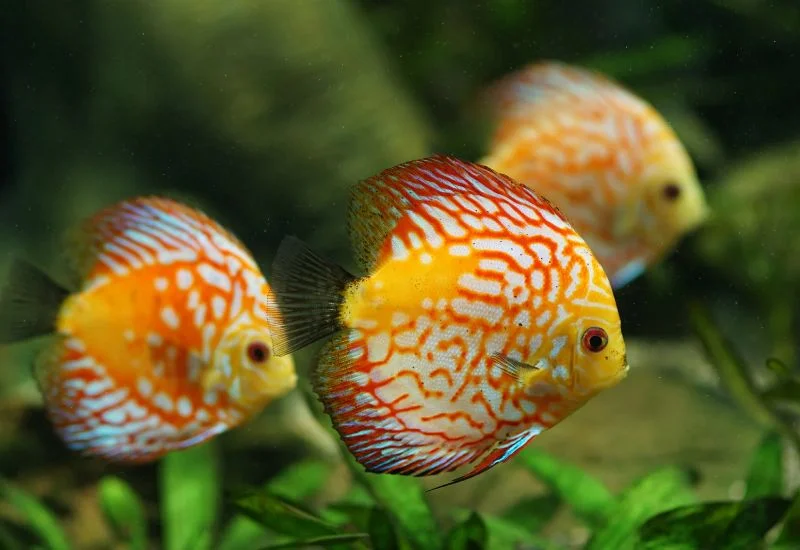
Introducing new fish to the aquarium and acclimating can be difficult. There can be major health issues if proper tips and guidance are not followed.
We can acclimate fish by following two methods.
Acclimating with the Floating Method
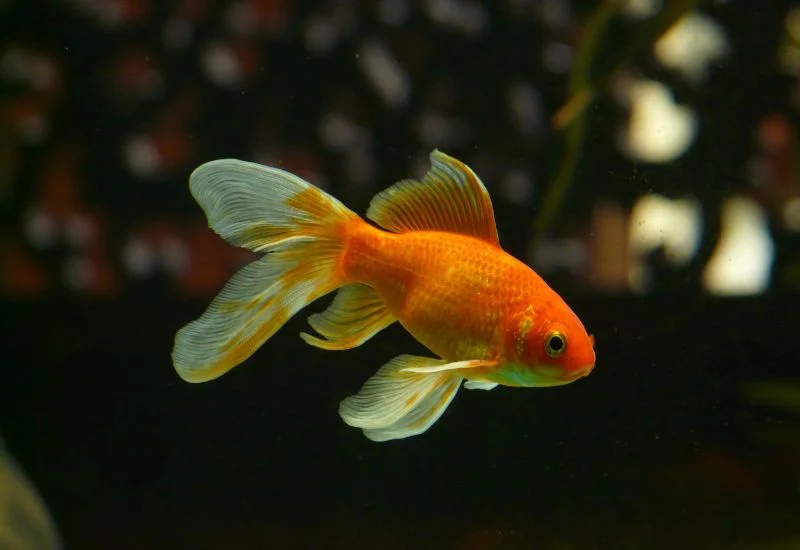
1- Float the Bag
- Place your bag into the aquarium. If your fish is not in the bag, put it into the bag and secure it with caution.
- Check the temperature of the bag water to see if it is suitable for the fish.
- Before placing the bag into the aquarium, check the water temperature.
- Turn the light off; on light can change the temperature of the water and sudden changes in the environment can shock your fish.
- Leave the bag in the aquarium in no light for 20 to 30 minutes.
- Watch your fish for any sign of stress. That could be the color change of the fish, rapid breathing, or lack of interest.
- If your fish shows any signs of stress, remove the bag from the tank and monitor them to improve their behavior.
2- Add Water From the Aquarium
- When 20 to 30 minutes have passed, open the bag and pour it into the bucket or aquarium
- Change the 50% to 100% water with the same water in the bag.
- Then, 50% of the water will be changed to aquarium water.
- Repeat this process two to three times.
- After the process, we can add the fish to the aquarium.
Acclimating With the Drip Method
This method can be used for fish bought from the shop and taken home within 2 to 3 hours. Fish in transit for more than 4 to 5 hours can die within a few hours if we release them into the aquarium.
1- Introducing the Fish
Pour the contents of the bag into the aquarium where the fish was. Pour the fish into the bucket or aquarium and keep it near the aquarium, where the fish will be transferred later. Make sure the fish is fully covered with the contents.
2- Setting up the Siphon
Select the siphon and understand the value of hues velvet. Control the flow through knots, clips, or bands. The flow of water should be 2 to 3 drops.
3- Pour out the 50% of Water
When the bucket is full of water, Pour out 50% of the water. Place the tube back into the bucket or aquarium. Wait for the bucket to fill full again with the water. This process can take time. Install a heating system so that the water temperature does not fall as per the requirements of the aquarium.
4- Move your Fish into the Aquarium
Once the water-filling process is complete, we can introduce the fish into the aquarium. We can do that without adding the water from the bucket into the aquarium.
Both methods can be used for both freshwater and saltwater fish.
Steps to Introduce New Fish to the Tank
- Before adding the fish into the tank water, dim the light as a sudden change of surroundings can give you a fish shock. Dim light lights reduce the stress level of the fish.
- Use a bag, put a fish in it, and place it in the tank for 10 minutes. The bag will float above the water, giving the fish an idea of their surroundings before being released into the tank.
- Add a cup of aquarium water into the tank to make the fish familiar with the aquarium’s water.
- Monitor your fish closely for any sign of stress.
- If there is any change in behavior, remove the bag from the aquarium.
Monitoring After the Introduction
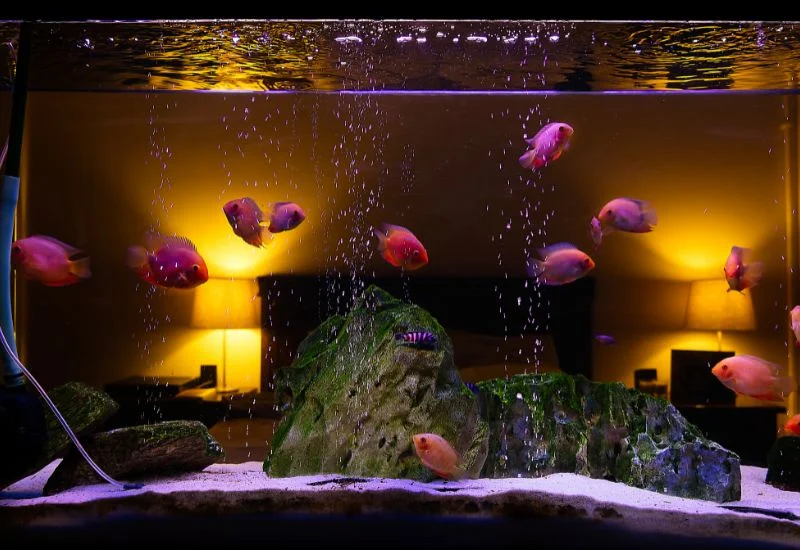
- Once the fish is released into the water, it is closely monitored for behavioral change.
- Look for any change in the fish’s color, rapid breathing, lack of appetite, or loss of interest.
- If you see any signs of stress in the fish, place the fish into another tank.
- Monitor fish are not bullied by other tank mates.
- Check to make sure there are no territorial issues. If there are, try to rearrange the rock to break their territory.
- You can place mirrors in the tank so fish can have their reflection. This will divert their attention.
Common Challenges and Solutions
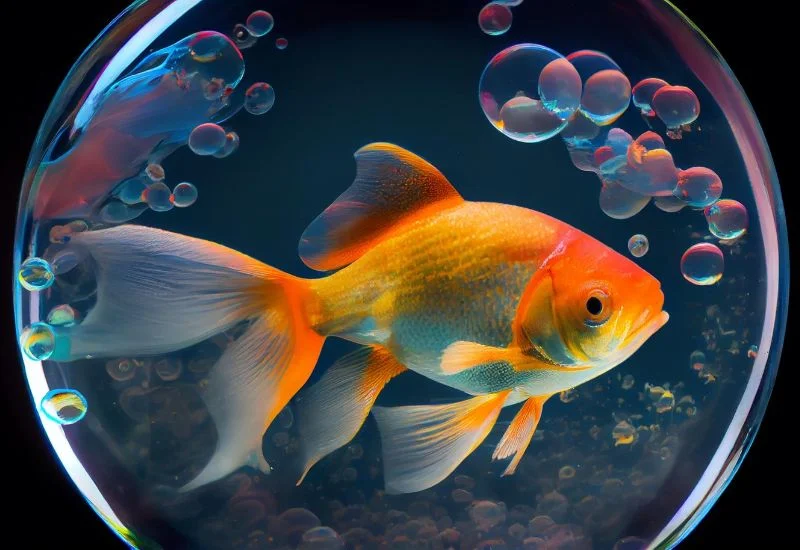
- Adding fish to the tank can demonstrate the aggressive behavior of other tank mates. Adding more than one fish will divert the aggression to one.
- Adding new fish to feed the other fish will divert their attention from the new fish.
- If there is bullying and fighting in the aquarium, try rearranging the decorations and leaving plenty of hiding spaces for the new fish.
- Monitor your fish for several days to look for signs of disease or illness that can be caused by the new environment.
- Place the fish into a separate tank if there is any change in the fish’s behavior.
- Maintain the water quality and check the pH of the water using different test kits available in the market.
Conclusion
Introducing new fish to old fish can make them anxious. Before adding the fish to the tank, an aquarist should consider many factors. The acclimatization of fish is important before introducing them. A sudden change in environment and water can cause fish to die.
Before introducing the fish, acclimate your fish for any behavioral changes that can cause du stress, water quality, and environmental change. Before adding your fish to the aquarium, monitor your fish closely for signs of stress. Make sure the fish is not bullied by other tank mates. Check there are no territorial issues.
If you encounter any of these issues, address them immediately to ensure your fish’s better health and survival.
